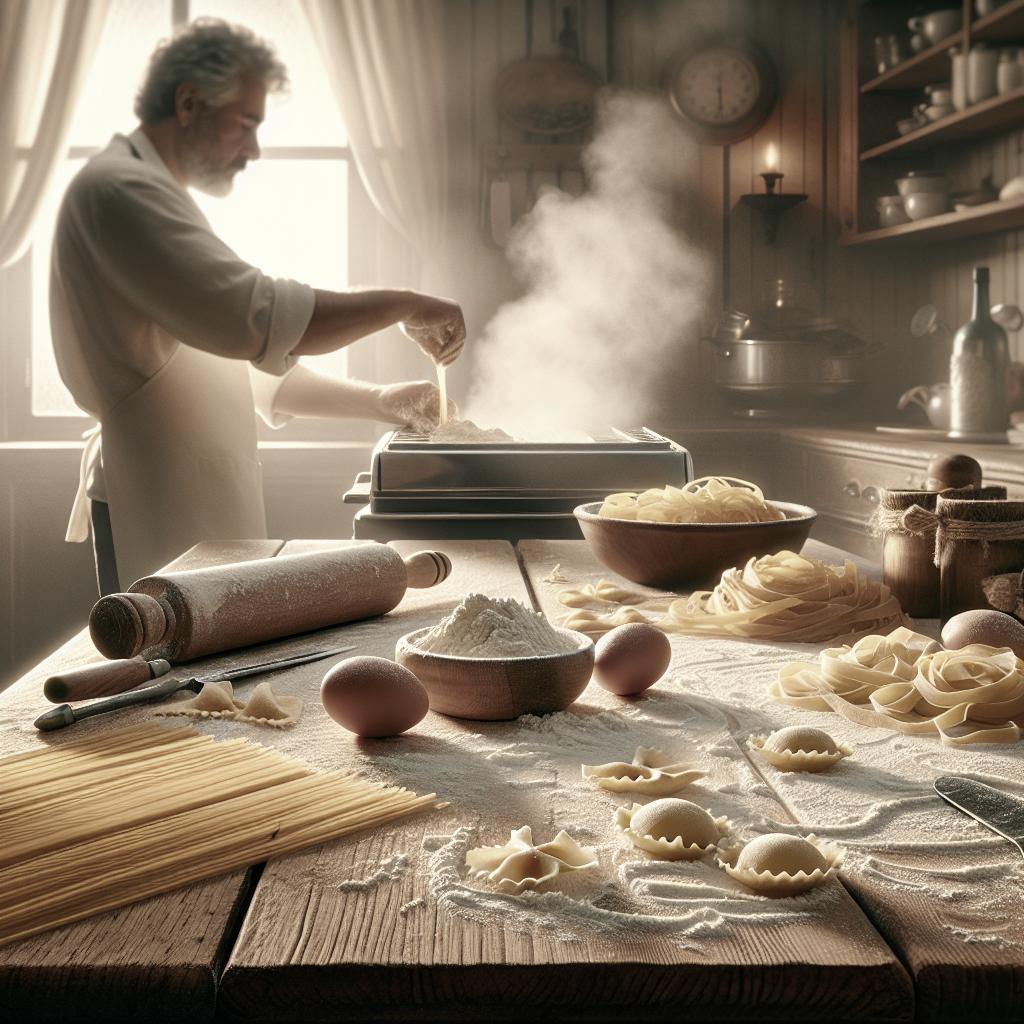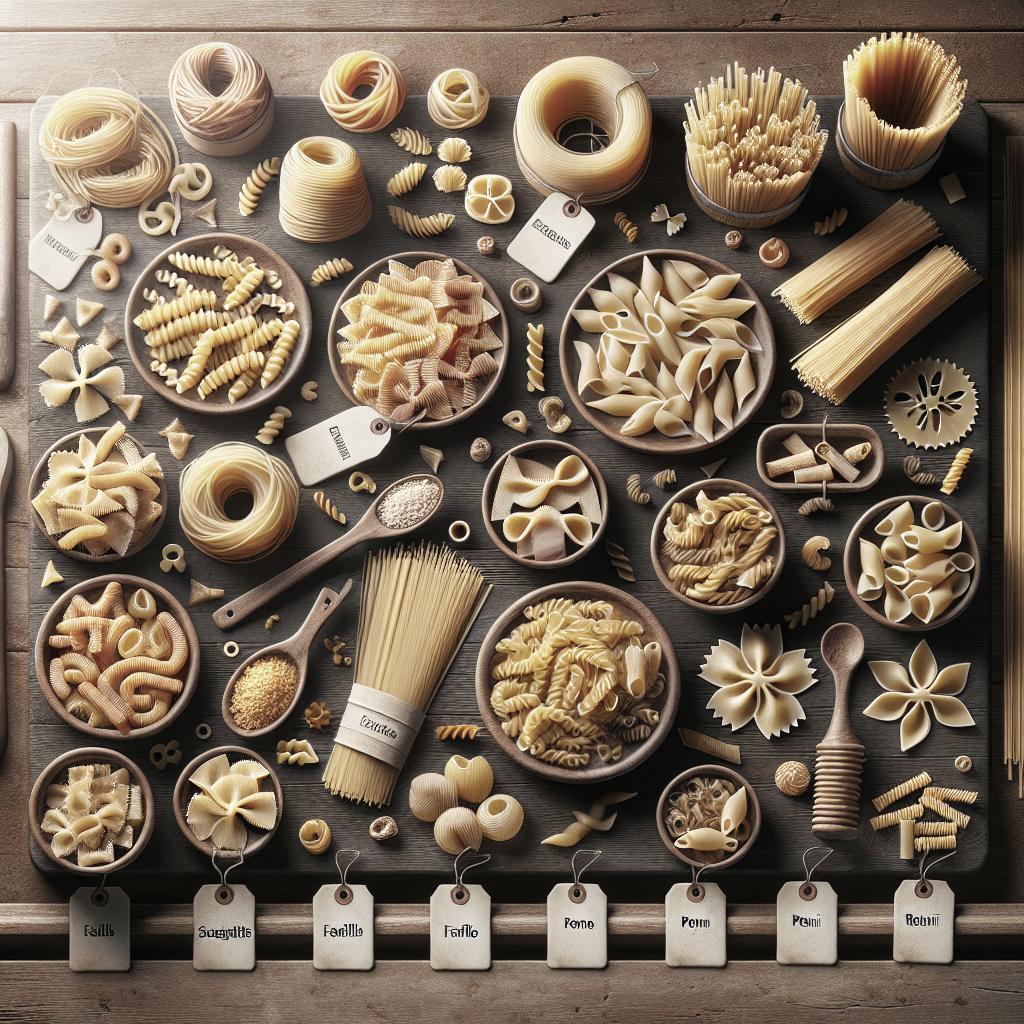“`html
How to Blend Herbs for Delicious Pasta Dishes
Discover the art of blending herbs to elevate your pasta dishes into culinary masterpieces. In this blog post, we delve into the flavors that herbs bring to your plate, with a spotlight on Olive Oil and Herb Spaghetti, a timeless dish that combines the simplicity of fresh ingredients with the richness of pasta. We’ll explore tips for crafting the perfect herb blend, share a detailed recipe, and guide you on incorporating these elements into a delightful dining experience. Whether you’re a seasoned cook or a beginner, learn how to make herb-infused pasta that dazzles your taste buds all year long.
Why We Love Our Olive Oil and Herb Spaghetti
Olive Oil and Herb Spaghetti is a dish beloved for its simplicity and flavor. At its core, it brings together fresh, aromatic herbs and high-quality olive oil to enhance the natural flavors of pasta, creating a vibrant yet comforting dish. This recipe is adaptable and allows the starring ingredients—fresh herbs like basil, parsley, and oregano—to shine. By selecting high-quality, extra-virgin olive oil, the subtle fruitiness and depth it adds elevate the pasta to another level.
The beauty of this dish is in its versatility. Whether you’re pairing it with a grilled protein or serving it as a standalone delight, the delicate balance of flavors can be adjusted to fit the seasonality of available herbs. The fresh combination is not just a treat for the taste buds but also a feast for the senses, with a visually appealing presentation and a fragrant aroma.
Tips & Tricks for Olive Oil and Herb Spaghetti Recipe
To master the perfect olive oil and herb spaghetti, understanding the harmony between herbs is essential. Freshness is key; always use the freshest herbs available for the best flavor impact. When chopping your herbs, use a sharp knife to avoid bruising them, which can release unwanted bitterness. Balancing different herbs is also crucial; consider the individual flavor profiles, such as the sweetness of basil versus the earthiness of oregano.
Heat management is important when cooking with olive oil. Avoid overheating it, as this can alter its flavor and diminish its nutritional value. When initially tossing the pasta with herbs, remove it from the heat source to preserve their freshness and fragrance. For added depth, consider briefly toasting garlic or red pepper flakes in the oil before adding the pasta, for a subtle kick that complements the herbs.
Ingredients
The following ingredients are needed to prepare this delightful dish:
- 400g of Spaghetti or your pasta of choice
- 1/2 cup of extra-virgin olive oil
- 1 cup of fresh basil leaves
- 1/2 cup of flat-leaf parsley
- 1 tablespoon of fresh oregano
- 3 cloves of garlic, minced
- Salt and pepper to taste
- Optional: Red pepper flakes for a hint of spice
- Parmesan cheese, freshly grated (optional)
Instructions
Begin by cooking the pasta in a large pot of salted boiling water until al dente, following the package instructions. Meanwhile, prepare your herbs by rinsing them under cool water and patting them dry. Finely chop the basil, parsley, and oregano, and set them aside. In a large skillet, heat the olive oil over medium heat and gently sauté the minced garlic until fragrant, taking care not to let it brown.
Once the pasta is cooked, reserve a cup of the cooking water and then drain the rest. Add the drained pasta directly into the skillet with the garlic oil. Generously sprinkle the chopped herbs over the pasta, add salt, pepper, and optional red pepper flakes, tossing everything together. If necessary, use some of the reserved pasta water to loosen the sauce. Serve immediately with a drizzle of olive oil and a sprinkle of Parmesan if desired.
More Pasta Recipes
If you’re a pasta enthusiast, there are countless ways to diversify your homemade pasta dishes with different herbs and ingredients. Consider experimenting with a classic Tomato Basil Pasta, where the sweetness of ripe tomatoes contrasts beautifully with the peppery notes of basil. For something richer, a Creamy Pesto Pasta integrates the creamy texture of pine nuts with a vibrant basil sauce for a delightful plate.
Another flavorful option is Lemon and Thyme Fusilli, which combines the zesty brightness of lemon with the subtle floral notes of thyme. These dishes not only expand your recipe repertoire but also demonstrate the versatility of herbs in bringing out the best in pasta.
Olive Oil and Herb Spaghetti Recipe Making Your Mouth Water? I Love Light and Fresh Pasta Dishes This Time of Year!
This dish is a celebration of seasonal eating and the transformative power of herbs. The lightness of Olive Oil and Herb Spaghetti makes it ideal for warmer months when fresh produce is abundant. Emphasizing fresh, high-quality ingredients not only enhances the taste but also aligns with healthier eating habits, offering a hearty meal without feeling too heavy.
Moreover, the ease of preparation makes it a go-to for weeknight dinners or casual gatherings, where the focus is on fresh flavors and shared enjoyment. Quick to make, yet impressive to serve, it resonates with those who appreciate the art of simplicity in culinary creations without compromising on flavor or nutrition.
Think You Can’t Enjoy Your Fresh Herbs Year-Round? Well, Think Again!
One of the joys of cooking with herbs is their ability to infuse dishes with vibrancy and depth. Even as seasons change, preserving the freshness of herbs is possible through various methods. Consider drying your herbs by hanging them in a well-ventilated area or using a dehydrator. Dried herbs retain their flavors and can be crushed and stored in airtight containers for use throughout the year.
Another efficient way to preserve herbs is by making herb-infused oils or pestos, which can be frozen in ice cube trays and thawed as needed. Keeping a windowsill herb garden also provides a constant supply of fresh herbs, regardless of the season, ensuring your pasta dishes remain delightful any time of the year.
Nutrition Information:
Olive Oil and Herb Spaghetti is a nutritious choice that combines healthy fats from olive oil with vitamins and minerals from fresh herbs. Olive oil is renowned for its heart-healthy monounsaturated fats and antioxidants, which aid in reducing inflammation. Herbs, on the other hand, are packed with vitamins A, C, and K, as well as essential antioxidants contributing to overall health.
This recipe is also customizable, allowing those with dietary restrictions to adapt it to their needs. By selecting whole-grain pasta or gluten-free alternatives, you can increase the fiber content without sacrificing flavor. Otherwise, the dish remains light in calories, making it suitable for a balanced diet.
Yield:
This recipe serves approximately four people, making it perfect for both family meals and small gatherings. Each serving is carefully portioned to deliver satisfaction without excess, allowing room for additional sides or a cheeky dessert.
Serving Size:
Each serving is about one quarter of the total dish, ensuring a hearty portion of pasta infused with the vibrant flavors of fresh herbs and quality olive oil. Feel free to adjust portions according to your guests’ appetite and pair with fresh, seasonal salads or crusty bread for a complete meal.
| Section | Content |
|---|---|
| Why We Love Our Olive Oil and Herb Spaghetti | Explores the simplicity, flavor, and versatility of the dish, emphasizing fresh herbs and quality olive oil. |
| Tips & Tricks | Provides guidance on choosing and combining herbs, managing heat, and enhancing flavors. |
| Ingredients | Lists essential ingredients for making Olive Oil and Herb Spaghetti. |
| Instructions | Step-by-step guide on how to prepare and assemble the pasta dish. |
| More Pasta Recipes | Suggests other herb-focused pasta dishes to try out and diversify your meal options. |
| Olive Oil and Herb Spaghetti Post | Discusses the appeal and practicality of the dish as both a seasonal and practical meal choice. |
| Preserve Fresh Herbs Year-Round | Offers tips on preserving herbs to enjoy their flavors in cooking throughout the year. |
| Nutrition Information | Highlights the health benefits and customizable nature of the dish. |
| Yield | Details how many servings the recipe yields, suitable for small groups. |
| Serving Size | Mentions the portion size per serving and possible accompaniments. |
“`


